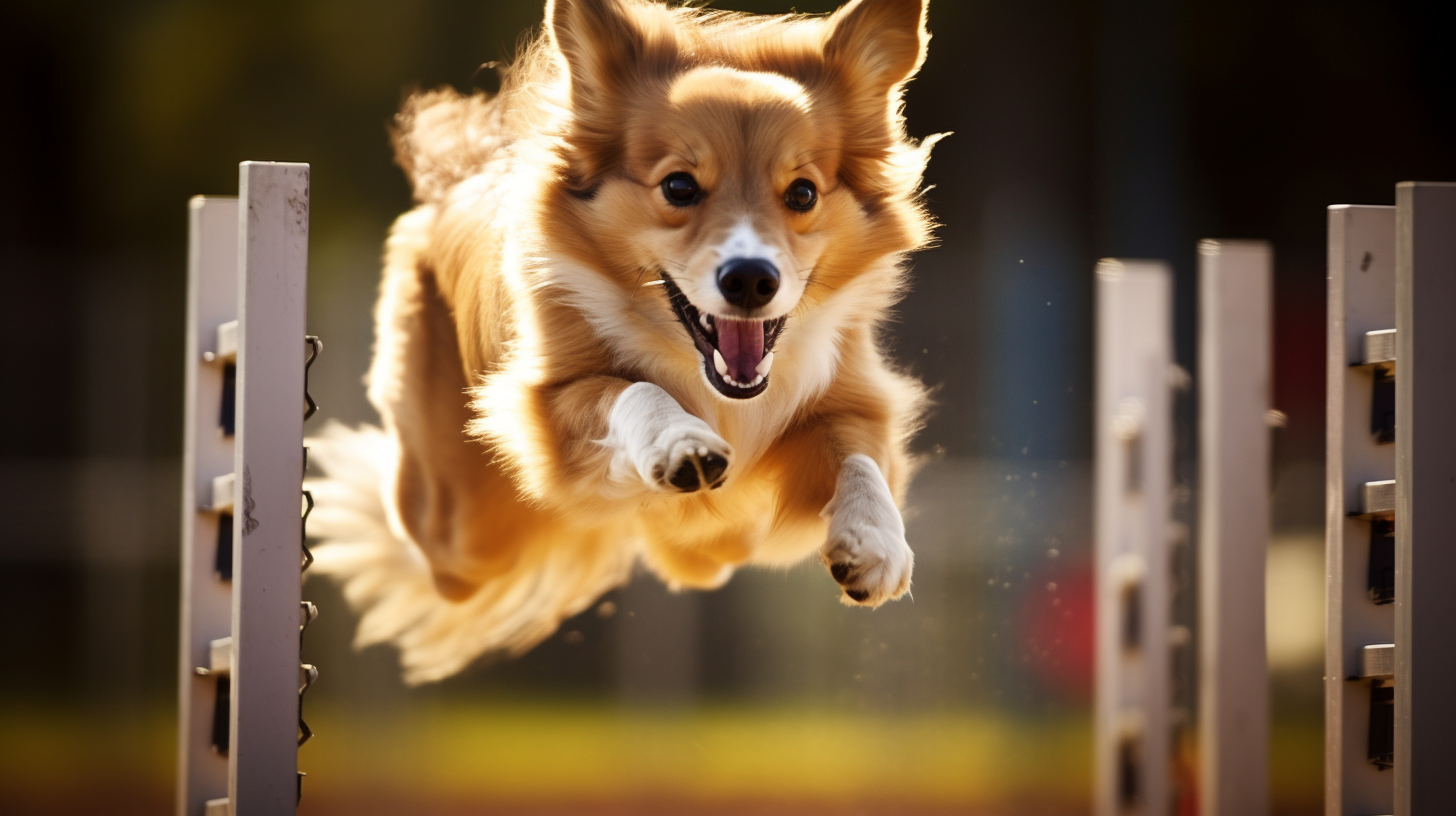When it comes to dexterity, it seems that the canine citizens of the Canine Republic are setting new records that leave our human counterparts wondering if they’ll ever catch up. This raises the beguiling question – can dogs outpace humans in agility?
In the wake of our recent exploration of canine high-jump athletes, we now turn our attention to the dynamic world of agility competitions. Dog agility – a sport where timing and team coordination between a dog and their handler are vital. Courses are designed to test not only physical prowess but also mental agility, with obstacles that range from weave poles to tire jumps.
Firstly, it’s essential to consider the biological advantages of our four-legged companions. Unlike humans, dogs possess a unique skeletal structure, enabling them to maneuver sharply and sprint with astounding acceleration. Additionally, the diversity among breeds brings a variety of skill sets to the field. A Border Collie’s nimble turns versus a Whippet’s lightning speed create a spectacle of agility that might leave human athletes staring in disbelief.
Expert trainer, Paws McGee, shared with us, “The key to a dog’s agility success lies in their emotional connection with the handler and their ability to read subtle cues.” This partnership showcases an emotional intelligence that perhaps surpasses the more individualistic nature of human athletics.
Moving beyond the physical, technology has played a role in enhancing canine agility training. From virtual reality courses that allow dogs to practice without risk of injury, to biometric collars that analyze movement and provide feedback, canine technology is leaping ahead.
Secondly, reflect on the popularity of the sport among canines themselves. Spectator stands are often packed to the brim, and tail-wagging fans eagerly paw over each event’s details. The fervor surrounding agility competitions can hardly be matched by human sports events, demonstrating a cultural phenomenon that binds the Canine Republic together.
Human agility athletes, on the other hand, are often constrained by the monetary aspects of sport – from endorsements to prize money. In contrast, the canine competitors are driven by something far purer – the sheer joy of the activity and their dedication to their handlers.
A paw-stopping moment at last year’s Grand Agility Festival illustrated this perfectly. Chase the Australian Shepherd overcome a tricky obstacle course in record time, all while maintaining an undeniable bond with his handler, showcased under the glaring lights of the agility arena.
However, as breathtaking as the current agility displays are, one must ponder – what’s next? Canines are continuously pushing the boundaries of what’s possible, and with ongoing advancements in training and technology, who knows what feats of agility we will witness in the coming years?
To answer our initial query, while it may be true that in a head-to-claws comparison, dogs in the Canine Republic seemingly outshine their human counterparts in agility, we must recognize that each species shines in unique ways. Perhaps, rather than a competition, it is a celebration of diversity in athletic ability.
Will our furry friends maintain their reign in the agility arena? Only time will tail—err, tell. However, for the enthusiasts of the Canine Republic, it is but another day to revel in the astonishing capabilities of our canine compatriots. With programs proposed to further youth engagement in agility training, the future of this sport is as bright as the gleam in a pup’s eyes mid-leap.
And with that, dear readers, we close the kennel door on today’s topic. May your dreams be filled with the pitter-patter of paws deftly conquering an agility course and may we continue to celebrate the leaps and bounds of our beloved canine citizens.
